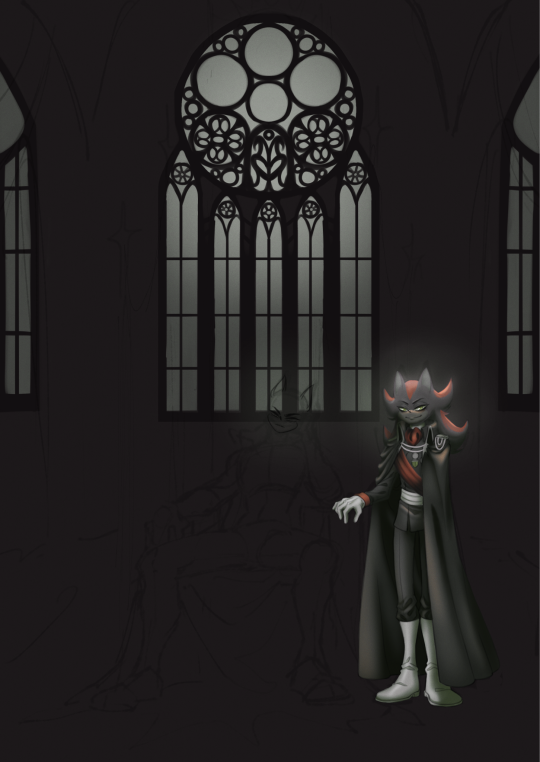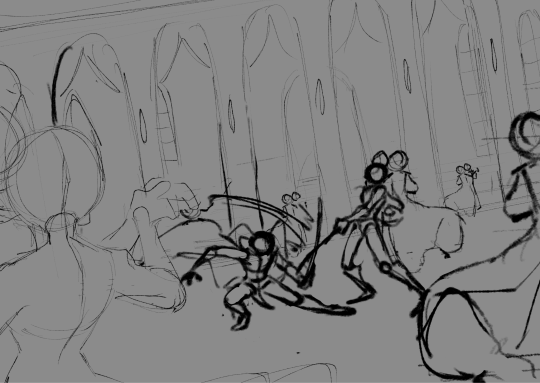#prince scourge
Text
Sonic stuff that I’m always too lazy to post here because my main is on DeviantArt 😦🫵










I’m way too lazy to add lore to this AU, so check out my DeviantArt for that: SmileyTheFirst 👍
#sonic the hedgehog#sonic#au#art#scourge the hedgehog#prince scourge#sonicinverse#inverse scourge#sonic au#metalscourge#coldsteel the hedgehog#sonic the hedghog fanart#shadow the hedgehog#sarah needlemouse#silver the hedgehog#zamy the zonecop#archie sonic#metal sonic
52 notes
·
View notes
Text





Prince Alucard my little meow meow....
#sonic the hedgehog#shadow the hedgehog#scourge the hedgehog#sonadow#ROYAL au#bart (bale art)#prince bane has midas touch its very cute!
272 notes
·
View notes
Text
Sonic, gesturing towards Scourge: You can't just act like this!
Scourge: Man..I got a riddle for you..
Sonic: ?
Scourge: Rose's are red, violets are blue..Shadow and I are black..so then..what the fuck are you?
Sonic:
Sonic: ...🙄
#j.p speaks#scourge the hedgehog#sonic the hedgehog#fresh prince of bel air in my brain rn#i love it lol#scourge will continue to disrespect Sonic
11 notes
·
View notes
Text
Queen Margaret (of Anjou) had written to the Common Council in November when the news of the Duke of York's coup was proclaimed. The letter from the queen was published in modernised English by M.A.E. Wood in 1846, and she dated it to February 1461 because of its opening sentence: ‘And whereas the late Duke of N [York]...." However the rest of the letter, and that of the prince, is in the present tense and clearly indicates that the Duke of York is still alive. The reference to the ‘late duke’ is not to his demise but to the attainder of 1459 when he was stripped of his titles as well as of his lands. If the queen’s letter dates to November 1460, and not February 1461, it make perfect sense. Margaret declared the Duke of York had ‘upon an untrue pretense, feigned a title to my lord’s crown’ and in so doing had broken his oath of fealty. She thanked the Londoners for their loyalty in rejecting his claim. She knew of the rumours,
that we and my lords sayd sone and owrs shuld newly drawe toward yow with an vnsome [uncounted] powere of strangars, disposed to robbe and to dispoyle yow of yowr goods and havours, we will that ye knowe for certeyne that . . . . [y]e, nor none of yow, shalbe robbed, dispoyled nor wronged by any parson that at that tyme we or owr sayd sone shalbe accompanied with
She entrusted the king's person to the care of the citizens ‘so that thrwghe malice of his sayde enemye he be no more trowbled vexed ne jeoparded.’ In other words the queen was well informed in November 1460 of the propaganda in London concerning the threat posed by a Lancastrian military challenge to the illegal Yorkist proceedings. Margaret assured the Common Council that no harm would come to the citizenry or to their property. Because the letter was initially misdated, it has been assumed that the queen wrote it after she realised the harm her marauding troops were doing to her cause, and to lull London into a false sense of security. This is not the case, and it is a typical example of historians accepting without question Margaret’s character as depicted in Yorkist propaganda. Margaret’s letter was a true statement of her intentions but it made no impact at the time and has made none since. How many people heard of it? The Yorkist council under the Earl of Warwick, in collusion with the Common Council of the city, was in an ideal position to suppress any wide dissemination of the letter, or of its content.
... When Margaret joined the Lancastrian lords it is unlikely that she had Scottish troops with her. It is possible that Jasper Tudor, Earl of Pembroke, sent men from Wales but there was no compelling reason why he should, he needed all the forces at his disposal to face Edward Earl of March, now Duke of York following his father’s death at Wakefield, who, in fact, defeated Pembroke at Mortimer’s Cross on 2 February just as the Lancastrian army was marching south. The oft repeated statement that the Lancastrian army was composed of a motley array of Scots, Welsh, other foreigners (French by implication, for it had not been forgotten that René of Anjou, Queen Margaret’s father, had served with the French forces in Nomandy when the English were expelled from the duchy, nor that King Charles VII was her uncle) as well as northern men is based on a single chronicle, the Brief Notes written mainly in Latin in the monastery of Ely, and ending in 1470. It is a compilation of gossip and rumour, some of it wildly inaccurate, but including information not found in any other contemporary source, which accounts for the credence accorded to it. The Dukes of Somerset and Exeter and the Earl of Devon brought men from the south and west. The Earl of Northumberland was not solely reliant on his northern estates; as Lord Poynings he had extensive holdings in the south. The northerners were tenants and retainers of Northumberland, Clifford, Dacre, the Westmorland Nevilles, and Fitzhugh, and accustomed to the discipline of border defence. The continuator of Gregory’s Chronicle, probably our best witness, is emphatic that the second battle of St Albans was won by the ‘howseholde men and feyd men.” Camp followers and auxiliaries of undesirables there undoubtedly were, as there are on the fringes of any army, but the motley rabble the queen is supposed to have loosed on peaceful England owes more to the imagination of Yorkist propagandists than to the actual composition of the Lancastrian army.
... Two differing accounts of the Lancastrian march on London are generally accepted. One is that a large army, moving down the Great North Road, was made up of such disparate and unruly elements that the queen and her commanders were powerless to control it.” Alternatively, Queen Margaret did not wish to curb her army, but encouraged it to ravage all lands south of the Trent, either from sheet spite or because it was the only way she could pay her troops.” Many epithets have been applied to the queen, few of them complimentary, but no one has as yet called her stupid. It would have been an act of crass stupidity wilfully to encourage her forces to loot the very land she was trying to restore to an acceptance of Lancastrian rule, with her son as heir to the throne. On reaching St Albans, so the story goes, the Lancastrian army suddenly became a disciplined force which, by a series of complicated manoeuvres, including a night march and a flank attack, won the second battle of St Albans, even though the Yorkists were commanded by the redoubtable Earl of Warwick. The explanation offered is that the rabble element, loaded down with plunder, had descended before the battle and only the household men remained. Then the rabble reappeared, and London was threatened. To avert a sack of the city the queen decided to withdraw the army, either on her own initiative or urged by the peace-loving King Henry; as it departed it pillaged the Abbey of St Albans, with the king and queen in residence, and retired north, plundering as it went. Nevertheless, it was sufficiently intact a month later to meet and nearly defeat the Yorkist forces at Towton, the bloodiest and hardest fought battle of the civil war thus far. The ‘facts’ as stated make little sense, because they are seen through the distorting glass of Yorkist propaganda.
The ravages allegedly committed by the Lancastrian army are extensively documented in the chronicles, written after the event and under a Yorkist king. They are strong on rhetoric but short on detail. The two accounts most often quoted are by the Croyland Chronicle and Abbott Whethamstede. There is no doubting the note of genuine hysterical fear in both. The inhabitants of the abbey of Crowland were thoroughly frightened by what they believed would happen as the Lancastrians swept south. ‘What do you suppose must have been our fears . . . [w]hen every day rumours of this sad nature were reaching our ears.’ Especially alarming was the threat to church property. The northern men ‘irreverently rushed, in their unbridled and frantic rage into churches . . . [a]nd most nefariously plundered them.’ If anyone resisted ‘they cruelly slaughtered them in the very churches or churchyards.’ People sought shelter for themselves and their goods in the abbey,“ but there is not a single report of refugees seeking succour in the wake of the passage of the army after their homes had been burned and their possessions stolen. The Lancastrians were looting, according to the Crowland Chronicle, on a front thirty miles wide ‘like so many locusts.“ Why, then, did they come within six miles but bypass Crowland? The account as a whole makes it obvious that it was written considerably later than the events it so graphically describes.
The claim that Stamford was subject to a sack from which it did not recover is based on the Tudor antiquary John Leland. His attribution of the damage is speculation; by the time he wrote stories of Lancastrian ravages were well established, but outside living memory. His statement was embellished by the romantic historian Francis Peck in the early eighteenth century. Peck gives a spirited account of Wakefield and the Lancastrian march, influenced by Tudor as well as Yorkist historiography.
… As late as 12 February when Warwick moved his troops to St Albans it is claimed that he did not know the whereabouts of the Lancastrians, an odd lack of military intelligence about an army that was supposed to be leaving havoc in its wake. The Lancastrians apparently swerved to the west after passing Royston which has puzzled military historians because they accept that it came down the Great North Road, but on the evidence we have it is impossible to affirm this. If it came from York via Grantham, Leicester, Market Harborough, Northampton and Stony Stratford to Dunstable, where the first engagement took place, there was no necessity to make an inexplicable swerve westwards because its line of march brought it to Dunstable and then to St Albans. The Lancastrians defeated Warwick’s army on 17 February 1461 and Warwick fled the field. In an echo of Wakefield there is a suggestion of treachery. An English Chronicle tells the story of one Thomas Lovelace, a captain of Kent in the Yorkist ranks, who also appears in Waurin. Lovelace, it is claimed, was captured at Wakefield and promised Queen Margaret that he would join Warwick and then betray and desert him, in return for his freedom.
Lt. Colonel Bume, in a rare spirit of chivalry, credits Margaret with the tactical plan that won the victory, although only because it was so unorthodox that it must have been devised by a woman. But there is no evidence that Margaret had any military flair, let alone experience. A more likely candidate is the veteran captain Andrew Trolloppe who served with Warwick when the latter was Captain of Calais, but he refused to fight under the Yorkist banner against his king at Ludford in 1459 when Warwick brought over a contingent of Calais men to defy King Henry in the field. It was Trolloppe’s ‘desertion’ at Ludford, it is claimed, that forced the Yorkists to flee. The most objective and detailed account of the battle of St Albans is by the unknown continuator of Gregory’s Chronicle. The chronicle ends in 1469 and by that time it was safe to criticise Warwick, who was then out of favour. The continuator was a London citizen who may have fought in the Yorkist ranks. He had an interest in military matters and recorded the gathering of the Lancastrian army at Hull, before Wakefield, and the detail that the troops wore the Prince of Wales’ colours and ostrich feathers on their livery together with the insignia of their lords. He had heard the rumours of a large ill-disciplined army, but because he saw only the household men he concluded that the northerners ran away before the battle. Abbot Whethamstede wrote a longer though far less circumstantial account, in which he carefully made no mention of the Earl of Warwick.
… Margaret of Anjou had won the battle but she proceeded to lose the war. London lay open to her and she made a fatal political blunder in retreating from St Albans instead of taking possession of the capital.' Although mistaken, her reasons for doing so were cogent. The focus of contemporary accounts is the threat to London from the Lancastrian army. This is repeated in all the standard histories, and even those who credit Margaret with deliberately turning away from London do so for the wrong reasons.
... The uncertainties and delays, as well as the hostility of some citizens, served to reinforce Margaret’s belief that entry to London could be dangerous. It was not what London had to fear from her but what she had to fear from London that made her hesitate. Had she made a show of riding in state into the city with her husband and son in a colourful procession she might have accomplished a Lancastrian restoration, but Margaret had never courted popularity with the Londoners, as Warwick had, and she had kept the court away from the capital for several years in the late 1450s, a move that was naturally resented. Warwick’s propaganda had tarnished her image, associating her irrevocably with the dreaded northern men. There was also the danger that if Warwick and Edward of March reached London with a substantial force she could be trapped inside a hostile city, and she cannot have doubted that once she and Prince Edward were taken prisoner the Lancastrian dynasty would come to an end. Understandably, at the critical moment, Margaret lost her nerve.
... Queen Margaret did not march south in 1461 in order to take possession of London, but to recover the person of the king. She underestimated the importance of the capital to her cause." Although she had attempted to establish the court away from London, the Yorkist lords did not oppose her for taking the government out of the capital, but for excluding them from participation in it. Nevertheless London became the natural and lucrative base for the Yorkists, of which they took full advantage. The author of the Annales was in no doubt that it was Margaret’s failure to enter London that ensured the doom of the Lancastrian dynasty. A view shared, of course, by the continuator of Gregory’s Chronicle, a devoted Londoner:
He that had Londyn for sake
Wolde no more to hem take
The king, queen and prince had been in residence at the Abbey of St Albans since the Lancastrian victory. Abbot Whethamstede, at his most obscure, conveys a strong impression that St Albans was devastated because the Lancastrian leaders, including Queen Margaret, encouraged plundering south of the Trent in lieu of wages. There must have been some pillaging by an army which had been kept in a state of uncertainty for a week, but whether it was as widespread or as devastating as the good abbot, and later chroniclers, assert is by no means certain. Whethamstede is so admirably obtuse that his rhetoric confuses both the chronology and the facts. So convoluted and uncircumstantial is his account that the eighteenth century historian of the abbey, the Reverend Peter Newcome, was trapped into saying: ‘These followers of the Earl of March were looked on as monsters in barbarity.’ He is echoed by Antonia Gransden who has ‘the conflict between the southemers of Henry’s army and the nonherners of Edward’s. The abbey was not pillaged, but Whethamstede blackened Queen Margaret’s reputation by a vague accusation that she appropriated one of the abbey’s valuable possessions before leaving for the north. This is quite likely, not in a spirit of plunder or avarice, but as a contribution to the Lancastrian war effort, just as she had extorted, or so he later claimed, a loan from the prior of Durham earlier in the year. The majority of the chroniclers content themselves with the laconic statement that the queen and her army withdrew to the north, they are more concerned to record in rapturous detail the reception of Edward IV by ‘his’ people. An English Chronicle, hostile to the last, reports that the Lancastrian army plundered its way north as remorselessly as it had on its journey south. One can only assume that it took a different route.
The Lancastrian march ended where it began, in the city of York. Edward of March had himself proclaimed King Edward IV in the capital the queen had abandoned, and advanced north to win the battle of Towton on 29 March. The bid to unseat the government of the Yorkist lords had failed, and that failure brought a new dynasty into being. The Duke of York was dead, but his son was King of England whilst King Henry, Queen Margaret and Prince Edward sought shelter at the Scottish court. The Lancastrian march on London had vindicated its stated purpose, to recover the person of the king so that the crown would not continue to be a pawn in the hands of rebels and traitors, but ultimately it had failed because the Lancastrian leaders, including Queen Margaret, simply did not envisage that Edward of March would have the courage or the capacity to declare himself king. Edward IV had all the attributes that King Henry (and Queen Margaret) lacked: he was young, ruthless, charming, and the best general of his day; and in the end he out-thought as well as out-manoeuvred them.
It cannot be argued that no damage was done by the Lancastrian army. It was mid-winter, when supplies of any kind would have been short, so pillaging, petty theft, and unpaid foraging were inevitable. It kept the field for over a month and, and, as it stayed longest at Dunstable and in the environs of St Albans, both towns suffered from its presence. But the army did not indulge in systematic devastation of the countryside, either on its own account or at the behest of the queen. Nor did it contain contingents of England’s enemies, the Scots and the French, as claimed by Yorkist propaganda. Other armies were on the march that winter: a large Yorkist force moved from London to Towton and back again. There are no records of damage done by it, but equally, it cannot be claimed that there was none.
-B.M Cron, "Margaret of Anjou and the Lancastrian March on London, 1461"
#*The best propaganda narratives always contain an element of truth but it's important to remember that it's never the WHOLE truth#margaret of anjou#15th century#english history#my post#(please ignore my rambling tags below lmao)#imo the bottom line is: they were fighting a war and war is a scourge that is inevitably complicated and messy and unfortunate#arguing that NOTHING happened (on either side but especially the Lancastrians considering they were cut off from London's supplies)#is not a sustainable claim. However: Yorkist propaganda was blatantly propaganda and I wish that it's recognized more than it currently is#also I had *no idea* that her letter seems to have been actually written in 1460! I wish that was discussed more#& I wish Cron's speculation that Margaret may have feared being trapped in a hostile city with an approaching army was discussed more too#tho I don't 100% agree with article's concluding paragraph. 'Edward IV did not ultimately save England from further civil war' he...did???#the Yorkist-Lancastrian civil war that began in the 1450s ended in 1471 and his 12-year reign after that was by and large peaceful#(tho Cron may he talking about the period in between 61-71? but the civil war was still ongoing; the Lancasters were still at large#and the opposing king and prince were still alive. Edward by himself can hardly be blamed for the civil war continuing lol)#but in any case after 1471 the war WAS believed to have ended for good and he WAS believed to have established a new dynasty#the conflict of 1483 was really not connected to the events of the 1450s-1471. it was an entirely new thing altogether#obviously he shouldn't be viewed as the grand undoubted rightful savior of England the way Yorkist propaganda sought to portray him#(and this goes for ALL other monarchs in English history and history in general) but I don't want to diminish his achievements either#However I definitely agree that the prevalent idea that the Lancasters wouldn't have been able to restore royal authority if they'd won#is very strange. its an alternate future that we can't possibly know the answer to so it's frustrating that people seem to assume the worst#I guess the reasons are probably 1) the Lancasters ultimately lost and it's the winners who write history#(the Ricardians are somehow the exception but they're evidently interested in romantic revisionism rather than actual history so 🤷🏻♀️)#and 2) their complicated former reign even before 1454. Ig put together I can see where the skepticism comes from tho I don't really agree#but then again the Yorkists themselves played a huge role in the chaos of the 1450s. if a faction like that was finally out of the way#(which they WOULD be if the Lancasters won in 1461) the Lancastrian dynasty would have been firmly restored and#Henry and Margaret would've probably had more space and time to restore royal authority without direct rival challenges#I'd argue that the Lancasters stood a significantly better chance at restoring & securing their dynasty if they won here rather than 1471#also once again: the analyses written on Margaret's queenship; her role in the WotR; and the propaganda against her are all phenomenal#and far far superior than the analyses on any other historical woman of that time - so props to her absolutely fantastic historians
19 notes
·
View notes
Text
Updated Commissions Info!
5 slots are open! DM me for any questions/concerns! 💖







Reblogs very much appreciated 🫶
#star wars#swtor#fandom#OC#OCs#drawing#art#commissions#marvel#the dragon prince#lord scourge#Malavai Quinn#arcann#arcann tirall
43 notes
·
View notes
Note
most submitted characters so far?
Nico di Angelo, Zuko, Sasuke, shadow the hedgehog, Scourge, and straight up JoJo from Horton Hears a Who (who deadass has 15 submissions somehow)
#nico di angelo#prince zuko#Sasuke#shadow the hedgehog#scourge#jojo mcdodd#Percy jackson#pjo#atla#Naruto#sonic the hedgehog#warrior cats#Horton hears a who#answered
39 notes
·
View notes
Note
"Chili dog order for, uh... "looks at the order sheet* Sanic!"

"While I'll gladly take that chili dog, the name's 'Sonic.' Sanic is over there."

"The name is 'Scourge,' ya key wieldin' freak!"
#mystery data (anon)#humor program (funny)#the light gives prince sonic strength (ic)#all hail king scourge baby! (ic)#good and evil clash (blog jump cameo)#fallen symphony#sonic the hedgehog#kingdom hearts#paradox muse#sonic archie comics
2 notes
·
View notes
Text
whats with kids books and having disembowlments
#aimed at wof and warriors#i know what you are#warrior cats#wings of fire#darkstalker#scourge#prince arctic
7 notes
·
View notes
Text
i’m extremely sleepy it’s very late i have work tomorrow but on the other hand. i could keep listening to the prince of egypt soundtrack.
9 notes
·
View notes
Text

OF COURSE THAT’S NOT HER ' MAN '. Princesses don’t have MEN. They have PRINCES! Or other princesses!
#( ❀ | I wanna play too! // .dash commentary. )#parricider#timelocker#( these two cannot escape this fate 🌼 YOU let them be seen in this light by following me u_u LKJGLKJGKJL#in case there are any questions ... yes. Ari would call Scourge a prince. he must be in disguise but--#he's a prince u_u#& Rascal is a princess no matter what she looks like 🍄 )
10 notes
·
View notes
Text










Wow, more AU stuff?! (Yeah-) + Needlemouse cuz yes
Also the Pentas sketch was just me figuring out her color palette so the sketch was hella rushed (first time drawing a comic, too, I know it sucks 😭)
#sonic#au#null the echidna#reck the tasmanian#prince scourge#prower the fox#inverse tails#inverse scourge#scourge the hedgehog#sonic inverse#Rile the bat#inverse rouge#pentas the hellion#Amy Pentas rose#Alisson acorn#archie sonic#Sonic comic#Sonic fan comic#sarah needlemouse#needlemouse#sonic au
17 notes
·
View notes
Text



#wow shenanigans#it's been a while since I've played a death knight and I'd forgotten how much I love them#both as a class and their story#this one has also decided to develop a personality outside of just game stuff#which doesn't happen very often where my wow kids are concerned#eirilys findlay#she has a playlist now and everything#yes she is still wearing her scourge armor I don't play many plate wearers and have a severe lack of decent transmogs#so she's gonna wear her old armor and use the fallen prince swords until I get something I like better
4 notes
·
View notes
Text
Scourge(scrapped from Lost Prince AU)
Decided I may as well post this cause why not & since I'm not adding him in I'll just ramble some. But yeah I originally had Scourge & Zonic to be in my Lost Prince AU but scrapped things cause I wasn't sure at points how to implement Zonic & I wasn't sure about Scourge.(I'm not adding Surge, Kit & Starline but might draw Surge & Kit at some point)
Here's a sketch I made, I find it a little funny that I give Sonic a crop top tank with a crop top sleeveless hoodie but I just let Scourge be shirtless with his biker jacket

The original idea was going to be in Lost Prince AU Scourge would show up at some point when Sonic is traveling with Sonia & Manic as Anti-Sonic. Stuff happens(like Anti-Sonic getting Sonic in trouble) & while Sonic tries to keep things to himself cause he's mostly on his own for this stuff Manic manages to figure thigns out. In the end the three fix things & manage to get Anti-Sonic back to his dimension.
That's the last they hear of him until he comes back when Sonic is modern Sonic & is now Scourge. Stuff happens & eventually he ends up arrested via Zonic. The next & last time he's heard from he's teaming up with Zobotnik to cause chaos at the prison when Zonic & his team are bringing Shadow & Rouge to take Mephiles back to Shadow, Rouge & Mephiles's dimension cause he's being let out on good behavior.(Eggman led to him getting arrested)
-
While I had some idea what I was going to do I don't know how to put things together. I have an idea outline wise but don't have a plot setup for every specific bit.(Like plotline for my remake of Sonic Underground, plotline of working on Sonic X & stuff)
Another thing is that while Scourge showed up in Sonic Underground it was by luck that his dimension showed up at that time. For one reason or another he doesn't have what Sonic does that led to Sonic showing up 4 decades later in Lost Prince AU. Scourge is just a normal Sonic(as normal as he can get) so the next time he shows up it's only been a couple years instead of 4 decades when he shows up. I'm having trouble explaining stuff but I'm just trying to explain it's a weird coincidence he showed up in Sonic Underground & his dimension's time does not pass slowly.
Speaking of normal he also doesn't have a Sonic Underground so it's just a more "normal" Sonic with a bad past that made him be anti-Sonic instead of a missing prince.(I'm aware I'm likely just rambling to myself about shit that possibly makes no sense)
I've seen some fics that make me think it'd be interesting to see him go from villain to kind of neutral & is that asshole friend that while he hates it seems to be a good listener when needed & is slowly accepting while he wants to be a bad boy he's happier now & should probably never return to his dimension
Not all villains can be changed(ironic as I have stuff setup for Mephiles & Infinite) but fics make things interesting sometimes.
-
Update
lol I checked the description from DA & found some funny stuff to add.
"Got the moves like an jackass"
-Title on DA
Description copied from DA:
Hey look a masculine Sonic, too bad it's Scourge(I swear out of all of these he's like the only Sonic that isn't a robot that I draw as a top)
Scourge was once known as evil/anti Sonic, at some point he found himself in Sonic's world & caused some havoc before Sonic stopped him. Years later they meet again, to bad thanks to Jules Sonic doesn't remember & Scourge wasn't prepared for Sonic to seize up due to remembering. It's unknown how Scourge could meet Sonic in the modern day as they met while Sonic was with his siblings & Scourge isn't immortal. Currently Scourge is in prison in Zonic's world.
1 note
·
View note
Text
The Legendary Adventures of the Bad Kids: Entries in the Legend Lore Database*
Full Database HERE
Adaine Abernant:
Latest in the line of Elven Oracles
Current wielder of the Sword of Sight, Sword of the Elven Oracle
She who invoked the name of Ankarna and broke Obliviati Mori
Kristen Applebees:
The Chosen of Helio, God of Corn
The Creator of Yes!/Yes?
She who Resurrected Herself
The Blessed Saint of Cassandra, Deity of Mystery, Night and Magic
Figueroth Faeth:
Mortal daughter of Gorthalax the Insatiable, Prince of the Nine Hells and former ruler of the Bottomless Pit
Current Archdevil of Rebellion, Figueroth the Infaethable, the Dark Mistress of the Bottomless Pit
Paramour of Ayda Aguefort, the Mistress of the Compass Points Library
Riz Gukgak:
Fifth of the World of Spyre to summon the Night Yorb to the Material Plane
He who slayed the Dragon Kalvaxus, Emperor of the Red Waste
Fabian Aramais Seacaster:
Mortal son of William "Old Bill" Seacaster, Legendary Pirate and the Current Captain of the Infernal Wastes, Scourge of the Nine Hells
Grandson of Telemaine Lomenelda, swordsmith of the Elven Kings
He who killed William "Old Bill" Seacaster
Current wielder of Fandrangor, Sword of the North Star
Dance Champion of the Elven Oracle, the Oracle of Dance
Gorgug Thistlespring:
Creator of the Barbificer Specialty, the first in the World of Spyre to combine barbarian rage and artificer spellcasting
Currently has the Night Yorb sealed in his personal vehicle, the Hangvan
The Bad Kids (Adventuring Party):
Defeated Kalvaxus, Emperor of the Red Waste
Ended the Nightmare King's Curse on Sylvaire
Defeated the Nightmare King, the King of the Dark Dreaming
Defeated the Cult of the Night Yorb
Defeated the Night Yorb
The first adventuring party in living memory to survive the Last Stand-ard Exam with no party/proctor fatalities
*Updates with corrections as legendary statuses of individuals are verified
#dimension 20#dimension 20 spoilers#fhjy#fhjy spoilers#fantasy high junior year#the bad kids#legend lore#adaine abernant#elven oracle#kristen applebees#saint kristen applebees#fig faeth#figueroth the infaethable#riz gukgak#fabian seacaster#gorgug thistlespring#dimension 20 meta
1K notes
·
View notes
Note
Which characters have the most submissions?
Nico di Angelo: 47
Sasuke uchiha: 41
Zuko: 21
Sebastian stardew valley: 18
Shadow the hedgehog: 18
Scourge: 17
JoJo McDodd: 15
Bruce Wayne: 12
Keith kogane: 12
Dream of the endless: 10
#nico di angelo#answered#sasuke uchiha#prince zuko#Sebastian stardew valley#shadow the hedgehog#scourge#jojo mcdodd#Bruce Wayne#keith kogane#dream of the endless#Percy jackson#pjo#naruto#atla#stardew valley#Sonic the hedgehog#warrior cats#horton hears a who#Batman#voltron#the sandman
49 notes
·
View notes
Text
Happy Birthday, Sonic!
(I'm still on hiatus, but wanted to wish my favorite blue video game character, other than Mega Man, a happy birthday. I also wanted to give you all a preview of the next Paradox Muse to appear when I get back.)

"Alright! Which one of you heroes thinks they can take on the future King of the Multiverse?!"
"King of the Multiverse? Don't make me laugh!"

A Dimensional Gateway opens up, and flying out of it is a strange looking sword that strikes Scourge.

"What the...?! It can't be...!"
The owner of the strange sword emerged from the Dimensional Gateway, the sword disappearing from the ground next to Scourge and reappearing in the owner's hand.

"So who are you supposed to be? My Heartless or something? Eh, doesn't matter. All I know is the Multiverse doesn't belong to you, buddy!"
(New Paradox Muse coming soon! See you all when I get back!)
#new muse coming soon#Paradox Muse#all hail king scourge baby (ic)#the light gives prince sonic strength (ic)#early bird cameo#sonic archie comics#sonic the hedgehog#kingdom hearts#clash of good and evil (blog jump cameo)#fallen symphony
8 notes
·
View notes